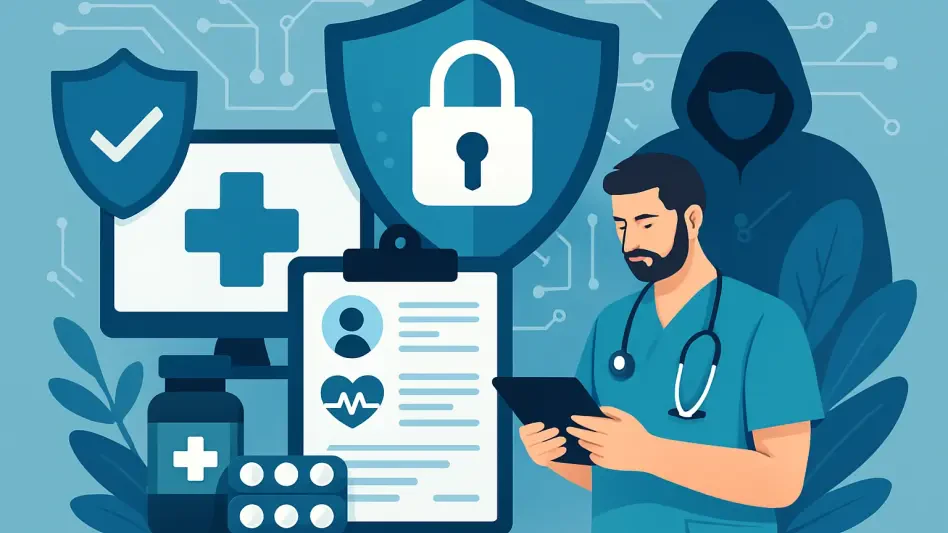In an era where healthcare institutions face unprecedented digital threats, with over half of all reported cyber incidents targeting this critical sector, a groundbreaking resource has emerged to fortify defenses. The European Union Agency for Cybersecurity (ENISA) has chosen the stage of the 10th ENISA eHealth Security Conference in Bucharest to release a vital cyber hygiene handbook tailored for the healthcare industry. Held in partnership with Romania’s National Cyber Security Directorate (DNSC) and the European Cybersecurity Competence Centre (ECCC), this event underscores the urgent need for robust cybersecurity measures as hospitals, clinics, and individual practitioners grapple with evolving risks to patient data and critical systems. This release marks a pivotal moment for the sector, offering practical tools to navigate an increasingly hostile digital landscape.
Event Highlights: A Strategic Response to Healthcare Cyber Threats
The conference, a key gathering of healthcare cybersecurity stakeholders, provided the perfect backdrop for ENISA to introduce its latest initiative, a comprehensive guide titled “Cyber Hygiene in the Health Sector.” This handbook, aligned with the EU Health Action Plan, targets a wide range of entities, from sprawling hospital networks to smaller providers with limited resources. Attendees learned how this resource aims to mitigate risks, safeguard sensitive information, and build resilience against the rising tide of cyber threats that have made healthcare a prime target.
A striking statistic shared during the event revealed that healthcare providers account for 53% of all reported cyber incidents, according to the latest ENISA Threat Landscape data. This alarming figure, coupled with the NIS360 report’s classification of the sector as being in a high-risk zone, emphasized the timeliness of this guide. Discussions highlighted how the handbook serves as a foundational tool to bridge the gap between the sector’s critical importance and its current cybersecurity maturity.
Core Components of the Cyber Hygiene Guide
One of the central focuses of the conference was the detailed unveiling of the guide’s actionable recommendations. ENISA experts outlined key strategies for protecting systems, securing networks, and safeguarding patient data. Practical measures such as maintaining up-to-date ICT asset inventories, enforcing strong password policies, and implementing multi-factor authentication were presented as essential steps to address common vulnerabilities across diverse healthcare settings.
Beyond these basics, the guide delves into specific protocols for secure system configurations, regular security patching, and deploying malware protection. The importance of network segmentation and continuous monitoring was stressed as a means to thwart potential threats. Next-generation firewalls and expert insights shared during the event further underscored why these measures are particularly critical for addressing the unique challenges faced by healthcare organizations.
Focus on Data Protection and Incident Preparedness
A significant portion of the conference agenda was dedicated to the guide’s emphasis on securing sensitive patient information. Recommendations include encrypting data both at rest and in transit, logging access to health records, and monitoring for unauthorized activity. Device security protocols, such as enabling remote-wipe functionality and automatic lockdowns after brief periods of inactivity, were highlighted as vital safeguards against data breaches in cases of loss or theft.
Incident response also took center stage, with the handbook advocating for dedicated response teams, clear communication channels, and planning for worst-case scenarios. Sessions explored the importance of regular vulnerability scans, penetration testing, and collaboration with national Computer Security Incident Response Teams (CSIRTs) and peer organizations. These proactive steps aim to ensure rapid recovery and mitigation when cyber incidents strike, a reality many healthcare providers face with increasing frequency.
Building a Culture of Awareness and Collaboration
Another key theme of the event was the guide’s focus on fostering cybersecurity awareness among healthcare staff. Presentations emphasized the need for education on digital risks, alongside strong physical security measures like clean-desk policies and secure printing practices. These holistic approaches were framed as complementary to technical defenses, driving resilience across the entire sector.
The conference also served as a platform for discussing broader collaboration, with ENISA encouraging partnerships with suppliers, managed security service providers, and other hospitals. The event’s interactive sessions allowed stakeholders to exchange best practices and explore how supply chain management can be fortified to prevent vulnerabilities from external sources. This collective approach was seen as a cornerstone for long-term security improvements.
Regulatory Context and Future Implications
The release of this guide comes amid significant regulatory developments, a topic extensively covered during the conference. Alignments with initiatives like the Medical Device Regulation (MDR), the Cyber Resilience Act (CRA), and the European Health Data Space Regulation (EHDS) were discussed as critical frameworks supporting cybersecurity efforts. Additionally, the EU Action Plan for hospital cybersecurity, launched earlier this year, was highlighted as a complementary effort, reinforcing ENISA’s role in delivering value to the sector.
Financial backing for these initiatives was also a point of interest, with a recent €36 million agreement under the Digital Europe Programme establishing the EU Cybersecurity Reserve. Administered by ENISA, this fund aims to strengthen cyber resilience across member states. Conference speakers noted how such investments, alongside regulatory advancements, signal a robust commitment to addressing healthcare’s digital challenges over the coming years, from now through 2027.
Reflecting on a Milestone Event
Looking back, the 10th ENISA eHealth Security Conference stood as a landmark occasion, not only for the release of a transformative cyber hygiene guide but also for uniting diverse stakeholders in a shared mission. The event fostered meaningful dialogue on the pressing cyber threats facing healthcare and provided actionable insights through the handbook’s practical recommendations. It served as a catalyst for change, urging immediate attention to digital defenses.
Moving forward, healthcare organizations were encouraged to adopt the guide’s strategies as a starting point for enhancing their cybersecurity posture. The emphasis on collaboration, supported by regulatory and financial frameworks, pointed to a future where shared knowledge and resources could outpace evolving threats. This event laid a strong foundation, prompting institutions to prioritize resilience and innovation in safeguarding patient trust and critical systems against the digital dangers ahead.








